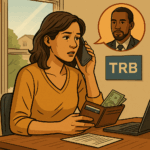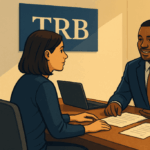Scammers are exploiting trusted retailers and platforms, and even the most vigilant users can be caught off guard.
A convincing alert, from what seemed like a trustworthy source, arrived at just the wrong moment, and it cost one customer their time, their money, and their sense of security.
The Incident
Flight 422 now boarding out of Gate B11.
Jane Doe was doing what we all do, passing the last few minutes before a flight, scrolling through her phone, checking messages, and confirming her boarding pass.
Then her phone chimed. New email: “PayPal: Please Review Your Account Activity.”
Jane had recently opened a PayPal account to manage payments for her new side business. The message looked legitimate: the familiar blue header, clean layout, and professional logo. It claimed a recent payment had failed and that her account would be suspended unless she verified the transaction immediately.
At the bottom, a bold button read “Log In Now.”
With boarding underway, Jane hesitated, but only for a moment. She didn’t want to risk losing access to her account, or losing sales. She tapped the button, glanced up to check her place in line—sixth—and opened the page.
It looked identical to PayPal’s login screen: same colors, design, and even a padlock icon in the corner. Convinced it was real, she entered her email and password. The page flickered, then refreshed, asking her to try again. Annoyed, and now second in line, she retyped her credentials and hit submit.
Now her turn, the same message appeared. She switched back to her boarding pass just in time to scan it and tuck her phone away. She started down the jetway, confident—and unaware—she’d figure it out later.
Red Flag Action Points
Scams targeting linked accounts, like PayPal, Venmo, Cash App, or Zelle®, often share the same warning signs:
- Messages or texts urging immediate action to “secure” your account.
- Generic greetings rather than your full name.
- Links that take you outside the app or direct you to log in through a third-party page.
- Web addresses that don’t match the company’s official domain.
- Requests for account information, security codes, or PINs.
- Feeling pressured to act during stressful or distracted moments.
If you receive a message that doesn’t seem right, never click or reply. Go directly into your official app or online banking to verify. And if your TRB account is ever involved, contact Customer Care right away.
The Lesson
Fraudsters know that speed and fear drive mistakes. They impersonate legitimate companies to create urgency, making you feel like you must act immediately to avoid a problem. That sense of panic can override even the most careful judgment.
Jane’s story shows how a few seconds of hesitation could have made all the difference. By pausing, verifying the source, and using trusted channels, she could have protected her identity and her accounts.
At TRB, our teams monitor for suspicious activity and might be able to assist in fund recovery if our customers experience financial loss; however, awareness and early detection remain your strongest defense.
The Resolution
While traveling, Jane discovered there was a problem when her debit card was declined unexpectedly. Checking her TRB Mobile Banking app, she saw her balance had dropped sharply, and several unfamiliar PayPal transactions were pending. When she tried logging in to PayPal to investigate, her credentials no longer worked—and both her recovery email and phone number had been changed.
It was late, Jane was out of town, the nearest branch was hours away. Acting fast, Jane froze her debit card through the online banking app. The next morning, she called Customer Care, who helped her begin a fraud claim and secure her account. Since she was traveling, Jane couldn’t receive a new card and had to rely on her credit card and the emergency cash she had on hand for the rest of her trip.
After returning home, Jane visited her local TRB branch to finalize her claims, close the compromised accounts, and request a new card. Over the next month, TRB’s fraud specialists and PayPal’s recovery team investigated. While the funds withdrawn through PayPal couldn’t be fully recovered, TRB issued a partial credit and helped her dispute unauthorized charges. Ultimately, Jane only regained a portion of her losses but gained a valuable lesson.
Takeaways
- Go straight to the source. Open your app or log in directly, never through links in messages or emails.
- Pause before reacting. Scammers rely on urgency to make you act without thinking.
- Use two-factor authentication and set up alerts to track activity on all financial apps.
- Report suspicious messages to the payment platform and contact TRB immediately if your account may be affected.
- Fraud can happen anywhere, but with vigilance and quick response, you can limit the damage and recover faster.
- Protect your credentials. Never share your username, password, or PIN with anyone.









